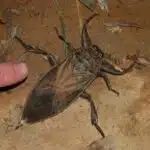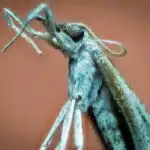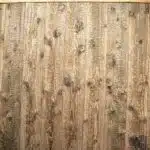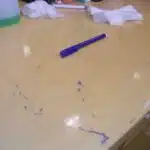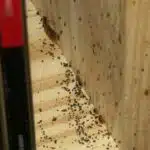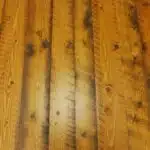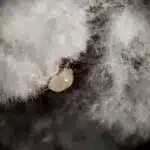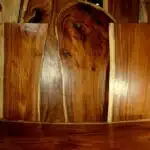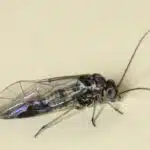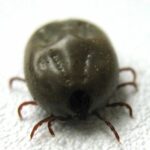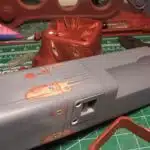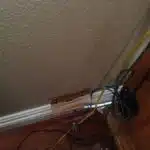Powderpost beetles are a common household pest that can cause significant damage to your property. These wood-boring insects lay their eggs in wood, and their larvae feed on the wood as they grow. As the larvae tunnel through the wood, they create small holes and tunnels, leaving behind a powdery sawdust-like substance. If left untreated, powderpost beetles can cause severe structural damage to your property. Therefore, it is essential to take necessary measures to get rid of them.
In this article, we will discuss how to identify and eliminate powderpost beetles from your home effectively. We will explore various techniques for preventing infestations and share tips for treating existing ones. With our expert guidance and knowledge on this subject matter, homeowners can take action to protect their homes from these destructive pests and maintain a safe living environment for themselves and their loved ones.
Understanding Powderpost Beetles
Powderpost beetles are a common species of wood-boring insects that can cause significant damage to wooden structures and materials. These beetles are particularly known for their ability to burrow into hardwoods, leaving behind small holes and tunnels that weaken the wood’s structural integrity. They are typically found in unfinished or poorly finished wood, such as furniture, flooring, and paneling.
The behavior of powderpost beetles is quite fascinating. The adult beetles lay their eggs on the surface of wood, after which the larvae hatch and bore into the wood to feed. The larvae then pupate within the wood before emerging as adults. This lifecycle takes anywhere from several months to several years, depending on environmental conditions such as temperature and humidity.
Prevention techniques for powderpost beetle infestations include proper storage and handling of wooden materials, sealing cracks and crevices in buildings, using heat treatment or fumigation methods for severe infestations, and regular inspections by pest control professionals. Natural remedies such as diatomaceous earth or essential oils may also be effective in repelling these pests.
Powderpost beetles have a significant economic impact on industries that rely on wooden materials, such as construction and furniture manufacturing. Additionally, there are environmental concerns associated with chemical treatments used to control these pests. Therefore, it is crucial to understand their behavior and lifecycle in order to implement effective prevention techniques while minimizing harm to human health and the environment.
With this understanding of powderpost beetles’ behavior and prevention techniques in mind, it is important to learn how to identify them properly before applying any control measures.
Identifying Powderpost Beetles
Powderpost beetles are a type of wood-boring beetle that can cause significant damage to wooden structures in your home. There are several species of powderpost beetles, but the most common ones found in North America are the Lyctid beetle and the Anobiid beetle. The Lyctid beetle is typically found infesting hardwoods, while the Anobiid beetle prefers softwoods.
Preventing infestation is key to keeping powderpost beetles at bay. The first step is to ensure that all wood used for construction or furniture is properly treated and dried. This means using wood that has been kiln-dried, heat-treated, or chemically treated to eliminate any existing larvae or eggs. Additionally, it’s important to store firewood away from your home and inspect any second-hand wooden items before bringing them into your living space.
Common signs of powderpost beetle infestation include small holes in wood surfaces, fine sawdust-like powder around these holes, and weakened or damaged wood structures. In the next section, we’ll discuss these signs in more detail and provide guidance on what you should do if you suspect an infestation.
Transition: Now that we’ve discussed how to identify powderpost beetles, let’s dive deeper into the signs of infestation and what actions you should take if you discover them in your home.
Signs Of Infestation
Without proper inspection and treatment, powderpost beetles can cause significant damages to wooden structures and furniture. These pests lay their eggs in cracks and crevices of wood, making it difficult to detect an infestation until severe damage has already occurred. Common damages caused by powderpost beetles include small holes in the wood surface, powdery sawdust-like frass, and weakened structural integrity.
To identify an infestation, look for small exit holes on the surface of the wood that are approximately 1/16 to 1/8 inch in diameter. The emergence holes are created when adult powderpost beetles emerge from the wood after completing their life cycle. Additionally, check for signs of frass or sawdust-like material near the exit holes or on surfaces adjacent to the infected area. If any of these signs are present, it is crucial to contact a pest control professional immediately.
Once an infestation is identified, various treatment methods can be used to eliminate powderpost beetles. However, prevention is always better than cure. To prevent future infestations, it is essential to take preventative measures such as avoiding storing firewood inside and regularly inspecting wooden furniture and structures for signs of damage. Sealing all cracks and crevices with sealant or paint can prevent adult beetles from laying eggs inside your wooden items. Remember that early detection and regular maintenance can go a long way in preventing costly damages caused by powderpost beetles.
Identifying the early signs of infestation is critical in controlling powderpost beetle damage effectively. In addition to contacting a professional pest control service at the first sign of infestation, implementing prevention techniques can significantly reduce the risk of future attacks. In the subsequent section, we will discuss practical prevention techniques that will help you keep your home free from these pesky insects.
Prevention Techniques
After identifying the signs of infestation, it is crucial to take action to prevent further damage. Prevention techniques can be divided into two categories: DIY prevention and professional prevention.
DIY prevention involves keeping your home dry and well-ventilated to discourage the growth of powderpost beetles. It also includes sealing all cracks and crevices in walls, floors, and furniture to prevent entry by adult beetles. Additionally, you can use insecticides that contain borate compounds or other chemicals that kill beetles when they come into contact with them.
Professional prevention involves hiring a pest control expert who will conduct a thorough inspection of your home and recommend appropriate measures to eradicate powderpost beetles. This may include fumigation or heat treatment for severe infestations. Furthermore, professionals may apply residual insecticides to prevent future infestations.
Overall, preventing powderpost beetle infestations requires a proactive approach from homeowners. While DIY methods may work for minor infestations, hiring a professional is always recommended for severe cases. By taking preventative measures, homeowners can avoid costly repairs and protect their property from further damage caused by these pests.
When inspecting wood for infestation, it is important to look for small holes on the surface that are about 1/32 inch in diameter. These holes are typically round or oval-shaped and are accompanied by fine sawdust-like shavings called frass that accumulates beneath the holes. If you notice these signs of infestation or suspect an active colony of powderpost beetles in your home, seek professional assistance immediately to prevent further damage.
Inspecting Wood For Infestation
Wood inspection is an essential step in pest control, especially for powderpost beetles. Inspection involves examining the wood for signs of infestation, such as small exit holes, fine sawdust or frass, and tunnels. Infested wood may also have a hollow sound when tapped or show signs of weakness or decay.
To inspect wood properly, it is necessary to use a flashlight and a magnifying glass to scrutinize the surface thoroughly. The examination should include all sides of the wood, including both ends. When inspecting wooden furniture, it is crucial to check joints and other areas where two pieces of wood meet as these areas are more susceptible to infestation.
Proper inspection can help detect infestations early and prevent further damage to wooden structures. Regular inspections are recommended for all wooden items in homes or buildings, particularly those that have been stored for long periods or recently transported from another location. In the next section, we will discuss how to remove infested wood from your property safely.
Inspecting wood is an essential part of pest control that helps prevent further damage caused by powderpost beetles. Early detection can save homeowners significant costs associated with repairing or replacing damaged structures. By using proper tools and techniques such as a flashlight and magnifying glass, homeowners can spot signs of infestation before they become severe problems. In the next section, we will explore how to remove infested wood safely from your property without spreading the pests elsewhere.
Removing Infested Wood
When dealing with powderpost beetle infestations, one of the most effective strategies to limit their spread is to remove infested wood. When deciding whether to tackle this task yourself or hire a professional, consider the extent of the damage and your level of expertise. DIY removal may be feasible for small-scale infestations, but larger infestations require professional treatment.
Removing infested wood involves several steps. First, identify which wood is infested by examining it closely for telltale signs such as small holes or piles of sawdust nearby. Next, remove all infected wood from the area, including surrounding wood that may be at risk of becoming infested in the future. Take care to dispose of the wood properly to avoid spreading the beetles further.
The cost of removing infested wood can vary depending on factors such as the extent of the damage and whether you choose to do it yourself or hire a professional. DIY removal can save money but may not be effective if done improperly. Professional removal can ensure complete eradication but comes at a higher cost. Ultimately, weigh your options carefully before making a decision on how to proceed with removing infested wood.
Transition: Once you have removed all infected wood from your property and disposed of it properly, the next step is treating any remaining areas that may still harbor powderpost beetles.
Treating Infested Wood
- Powderpost beetles are common wood pests that typically inhabit hardwood, such as oak and maple, which are used in construction.
- Identification of infested wood typically includes signs of exit holes, sawdust, and powdery frass.
- The assessment of damage should include an evaluation of the extent of the infestation and the extent of damage to the wood.
- Treatment of infested wood may require the removal and replacement of heavily damaged wood.
- Chemical treatments such as insecticides and fungicides may be necessary to prevent reinfestation of the wood.
- In some cases, heat treatments may be an effective alternative to chemical treatment for powderpost beetles.
Identifying Infested Wood
Powderpost beetles are a common type of wood-boring beetle that can cause extensive damage to wooden structures and furniture. Identifying infested wood is an important step in treating an infestation, as it allows you to determine the extent of the damage and decide on the best course of action.
Common habitats for powderpost beetles include hardwood floors, paneling, furniture, and structural timbers. These insects prefer to lay their eggs in freshly cut, unfinished wood with a moisture content above 10%. Once the eggs hatch, the larvae bore into the wood and feed on the starches and other nutrients present. Over time, this can weaken the structure of the wood and cause significant damage.
To identify infested wood, it is important to look for signs of damage such as small holes or tunnels in the surface of the wood. You may also see small piles of sawdust-like frass near these holes, which is a sign that the beetles are actively feeding. In some cases, you may even hear a ticking sound coming from inside the wood as the insects tunnel through it. A professional pest control expert can help you assess the extent of any infestation and provide guidance on how best to address it.
In conclusion, identifying infested wood is critical when treating an infestation of powderpost beetles. By understanding their common habitats and conducting a thorough damage assessment, you can take steps to prevent further damage and protect your wooden structures and furniture from future attacks. If you suspect that you have an infestation, contact a professional pest control expert for assistance in developing an effective treatment plan.
Assessment Of Damage
Assessment of damage is an essential step in treating infested wood. It helps determine the extent of damage caused by powderpost beetles, allowing professionals to identify the best course of action to take. The assessment process involves inspecting the affected area for signs of infestation, such as small holes or tunnels in the surface of the wood, and determining the severity of the damage.
Once an infestation has been identified and assessed, repairing infested wood becomes necessary. The level of repair required will depend on the extent of damage caused by powderpost beetles. In some cases, minor repairs may be sufficient, while severe infestations may require extensive repairs or replacement of damaged wood. Repairing infested wood should always be done by a professional pest control expert to ensure that it is done correctly and effectively.
In conclusion, assessing the damage caused by powderpost beetles is crucial when treating infested wood. After identifying areas that have been affected, it’s important to repair them appropriately to prevent further damage. To ensure that repairs are carried out correctly and effectively, it’s best to work with a professional pest control expert who can guide you through the process and provide valuable advice on how best to deal with any future infestations.
Treating Infested Wood
Wood treatment is an essential aspect of pest management. When it comes to dealing with powderpost beetle infestations, it’s important to identify the extent of damage caused by these pests to determine the appropriate course of action. The next step is treating infested wood to prevent further damage and ensure that the structure remains safe and stable.
Treating infested wood requires specialized knowledge and expertise, which is why it’s important to work with a professional pest control expert. They will be able to assess the extent of the damage and determine the best approach for treating infested wood. Depending on the severity of the infestation, various treatment methods may be used, including fumigation, heat treatment, or chemical treatments.
Effective wood treatment not only eliminates current infestations but also prevents future ones. It’s crucial to take preventive measures such as sealing cracks and crevices in wooden structures, applying protective coatings, and regularly inspecting for signs of pest activity. By working with a professional pest control expert and implementing preventive measures, homeowners can rest assured that their wooden structures are protected from powderpost beetle infestations.
Fumigation
After treating infested wood, fumigation is another effective method for getting rid of powderpost beetles. Fumigation involves enclosing the structure or item to be treated in a tent and using specialized equipment to release a gas that penetrates all areas where the beetles may be present. This method is highly effective at killing all life stages of powderpost beetles.
While fumigation can be costly, there are cost-effective alternatives that may also work. For example, exposing infested wood to extreme temperatures can be an effective way to kill powderpost beetles. This can be done by heating the wood in an oven or kiln or freezing it in a deep freezer. However, it is important to note that these methods should only be attempted by professionals with the proper equipment and training.
In addition to fumigation and temperature-based treatments, insecticides can also be used to get rid of powderpost beetles. Insecticides are chemicals specifically designed to kill pests like powderpost beetles and can come in various forms such as sprays, dusts, and foams. When using insecticides, it is important to carefully follow instructions on the label and take appropriate safety precautions such as wearing protective clothing and ensuring proper ventilation during application.
Using Insecticides
To tackle the pesky powderpost beetles, insecticides are one of the most effective methods to use. There are various types of insecticides that you can use, including residual and contact sprays, dusts, and fumigants. Residual and contact sprays work by killing the adult beetles when they come into contact with the spray, while dusts target the larvae hidden within the wood. Fumigants are highly potent chemicals that are best used in enclosed spaces.
However, it is important to take safety precautions when using insecticides to get rid of powderpost beetles. Always read the label and follow instructions carefully to avoid any harm to yourself or others. Wear protective gear such as gloves, goggles, and a mask when applying insecticides. Keep children and pets away from treated areas until it is safe for them to return.
Insecticides can be an effective solution to getting rid of powderpost beetles if used correctly and safely. However, if you prefer a more natural approach or want to try additional methods alongside insecticides, there are other remedies available that can help combat these pesky pests.
Natural Remedies
If you are looking for a DIY solution to get rid of powderpost beetles, there are a few natural remedies that you can try. One popular option is to use diatomaceous earth, which is made up of fossilized algae and works by drying out the beetles’ exoskeletons. Simply sprinkle the powder around areas where you have seen beetle activity and leave it in place for several days before vacuuming it up.
Another eco-friendly solution is to use essential oils with insecticidal properties. Cedarwood oil, for example, has been shown to be effective against powderpost beetles. Mix a few drops of the oil with water and spray it directly onto surfaces where the beetles are present. You can also use lavender or peppermint oil in the same way.
Finally, consider using boric acid as a natural remedy for powderpost beetle infestations. This substance can be found in many hardware stores and works by disrupting the beetles’ digestive system. Apply it directly onto wood surfaces or mix it with water to create a spray solution.
By trying these DIY remedies, you may be able to eliminate powderpost beetles from your home without resorting to harsh chemicals or pesticides. However, if your infestation persists despite your best efforts, it may be time to consider hiring a professional exterminator who can provide more comprehensive solutions.
Hiring A Professional Exterminator
As an expert in pest control, it is important to understand that getting rid of powderpost beetles can be a daunting task. While DIY methods may seem like a cost-effective solution, they come with their own set of drawbacks. One such drawback is the inability to detect all affected areas and eliminate infestations completely. This can lead to future infestations and further damage.
Hiring a professional exterminator has many benefits over DIY methods. Professionals have access to specialized equipment and chemicals that are more effective at eliminating powderpost beetles. They also have the expertise to locate all affected areas and determine the best course of action for elimination. Additionally, professional extermination services offer warranties or guarantees for their work, giving homeowners peace of mind.
When choosing a professional extermination service, it is important to compare different companies and their services. Look for companies that have experience in dealing with powderpost beetles specifically, as they will have more knowledge on how to locate and eliminate them effectively. Consider reviews from previous clients and ask for references before making a final decision.
Ultimately, hiring a professional exterminator offers many benefits over DIY methods when dealing with powderpost beetle infestations. However, it is important to choose the right company for the job. In the next section, we will discuss ways to maintain your home’s structural integrity and prevent future infestations from occurring.
Maintaining Your Home’s Structural Integrity
As a pest control professional, I have seen the damage that powderpost beetles can cause to homes. These pests are difficult to detect and even more difficult to get rid of once they have infested your home. However, there are steps you can take to prevent an infestation from happening in the first place.
One important aspect of maintaining your home’s structural integrity is through regular home renovation. This includes repairing any cracks or gaps in your walls, floors, and ceilings where powderpost beetles may enter. Additionally, make sure your attic and crawl space are well-ventilated and dry as these areas are particularly susceptible to beetle infestations.
DIY tips for preventing powderpost beetles include using sealants on exposed wood surfaces and storing firewood away from your home. It’s also important to inspect any wooden furniture or décor for signs of infestation before bringing them into your home. By taking these preventative measures, you can avoid the costly and time-consuming process of getting rid of powderpost beetles in your home. In the subsequent section, we will discuss regular cleaning and maintenance practices that will help keep these pests at bay.
Regular Cleaning And Maintenance
Regular cleaning and maintenance are essential for preventing the infestation of powderpost beetles. These pests are attracted to damp or moldy areas, so it is crucial to keep your home clean and dry. Regular cleaning involves vacuuming, mopping, and dusting the entire house to remove any food particles, dead insects, or debris that may attract powderpost beetles. It’s important to pay extra attention to areas where wood is present, such as windowsills, baseboards, and furniture.
Home organization is another crucial aspect of preventing powderpost beetle infestations. Cluttered spaces provide ample hiding places for these pests and make it difficult to spot an infestation before it becomes severe. Ensure that all storage spaces are organized and free from clutter. Avoid storing old newspapers or magazines near wooden items as they can provide a breeding ground for powderpost beetles.
Regular cleaning and home organization alone may not be enough to prevent a powderpost beetle infestation entirely. However, they play an essential role in reducing the chances of an outbreak significantly. By following these steps, you can minimize the risk of attracting these destructive pests into your home.
Transition: While regular cleaning and home organization go a long way in preventing infestations, there are other vital steps you should take to ensure your home remains powderpost beetle-free. One such step involves storing wood properly.
Storing Wood Properly
Regular cleaning and maintenance of your home is important in preventing and controlling powderpost beetles. However, proper storage of wood can also play a crucial role in keeping these pests away from your home. Storing wood properly not only prevents the infestation of powderpost beetles but also helps with moisture control.
Proper storage means that you need to keep your firewood off the ground and away from your home’s exterior walls. This will prevent moisture buildup and block pathways for pests to enter your home. Make sure that you store firewood at least 30 feet away from your house, as this reduces the chances of any infestation spreading.
Moisture control is vital because it creates an environment that is less conducive to powderpost beetle activity. In addition to proper storage, ensure that you have good ventilation in areas where you store wood, as this helps reduce humidity levels. You should also avoid stacking firewood too high as it makes it difficult for air circulation, leading to increased moisture levels.
| Proper Storage | Moisture Control |
|---|---|
| Keep firewood off the ground | Good ventilation |
| Store firewood at least 30 feet away from the house | Avoid stacking firewood too high |
| Keep firewood away from exterior walls | Reduce humidity levels |
In conclusion, proper storage techniques such as keeping firewood off the ground and away from exterior walls are essential for preventing powderpost beetle infestations. Moisture control is equally important, so make sure that there is sufficient ventilation in areas where you store wood and avoid stacking it too high. By taking these steps, you can protect your home from powderpost beetles and keep it safe all year round.
Conclusion: Protecting Your Home From Powderpost Beetles
As a pest control professional, it’s essential to understand that getting rid of powderpost beetles isn’t enough. You must also protect your home from reinfestation. Once you’ve eliminated the infestation, you’ll need to take steps to prevent new ones from taking hold. Prevention is key, and long-term management is the ultimate goal.
To protect your home from reinfestation, you should start by identifying the source of the initial infestation. This will help you determine what measures to take to prevent future problems. Some common sources include untreated wood, firewood, secondhand furniture and antiques. If you live in an area where powderpost beetles are prevalent, consider treating susceptible wood with a borate-based product or replacing it with treated lumber.
Another effective measure for protecting against reinfestation is keeping your home dry and well-ventilated. Powderpost beetles require moisture to survive, so reducing humidity levels can make your home less hospitable to them. Repair any leaks immediately and use dehumidifiers in damp areas like basements and crawl spaces.
In conclusion, eradicating powderpost beetles is just the first step in protecting your home from these destructive pests. Long-term management requires ongoing efforts to prevent reinfestation. By identifying potential sources of infestations and taking proactive measures like treating wood with borates and maintaining proper ventilation, you can keep powderpost beetles at bay for years to come. Remember that prevention is always better than cure when it comes to pest control!
Conclusion
Powderpost beetles are a common household pest that can cause significant damage to wooden structures and furniture. These pests have a long life cycle, lasting up to several years, and can be difficult to detect until the infestation has already caused extensive damage. Identifying and preventing powderpost beetle infestations is essential for protecting your home’s structural integrity.
To identify powderpost beetles, it is important to look for small, round exit holes in wood surfaces. These holes are typically less than 1/8 inch in diameter and may contain fine sawdust or frass. Additionally, adult beetles may be visible on or near infested wood.
Prevention techniques include inspecting wood for infestation before bringing it into your home, maintaining your home’s structural integrity through regular repairs and maintenance, regularly cleaning and vacuuming areas where wood is stored or used, and storing wood properly in dry, well-ventilated areas.
According to recent studies, powderpost beetles are responsible for causing thousands of dollars in damage to homes each year. In fact, one study found that the average cost of repairing damage caused by these pests was over $6,000 per household. By taking proactive measures to prevent infestations and address them quickly when they do occur, homeowners can save themselves significant time and expense.
As a pest control professional/expert, it is my recommendation that homeowners take steps now to protect their homes from powderpost beetle infestations. By identifying potential sources of infestation early on and implementing preventative measures such as regular inspections and proper storage techniques, homeowners can avoid costly repairs down the line. Remember: prevention is key when it comes to protecting your home from these destructive pests!
Image Credits
- “bostrichid beetles, branch and twig borers, horned powderpost beetles” by Clare Mateke (featured)

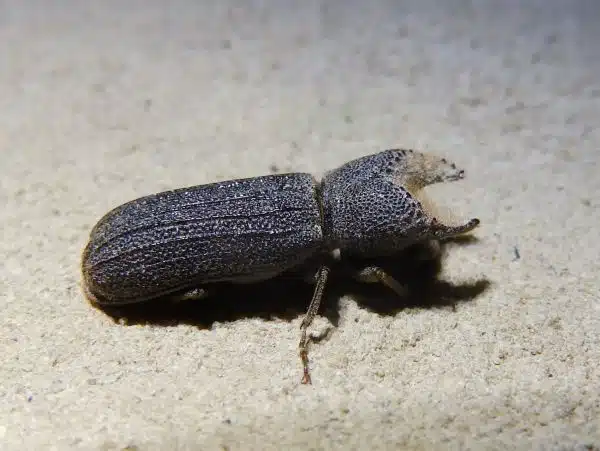


![How To Repair Rotted Wood 4 Texture : Altario Buick Estate Wagon : Rotting Faux Wood Paneling [1 of 2]](https://green-life.blog/wp-content/uploads/2023/05/z1CersK-gCjq-150x150.jpg.webp)

